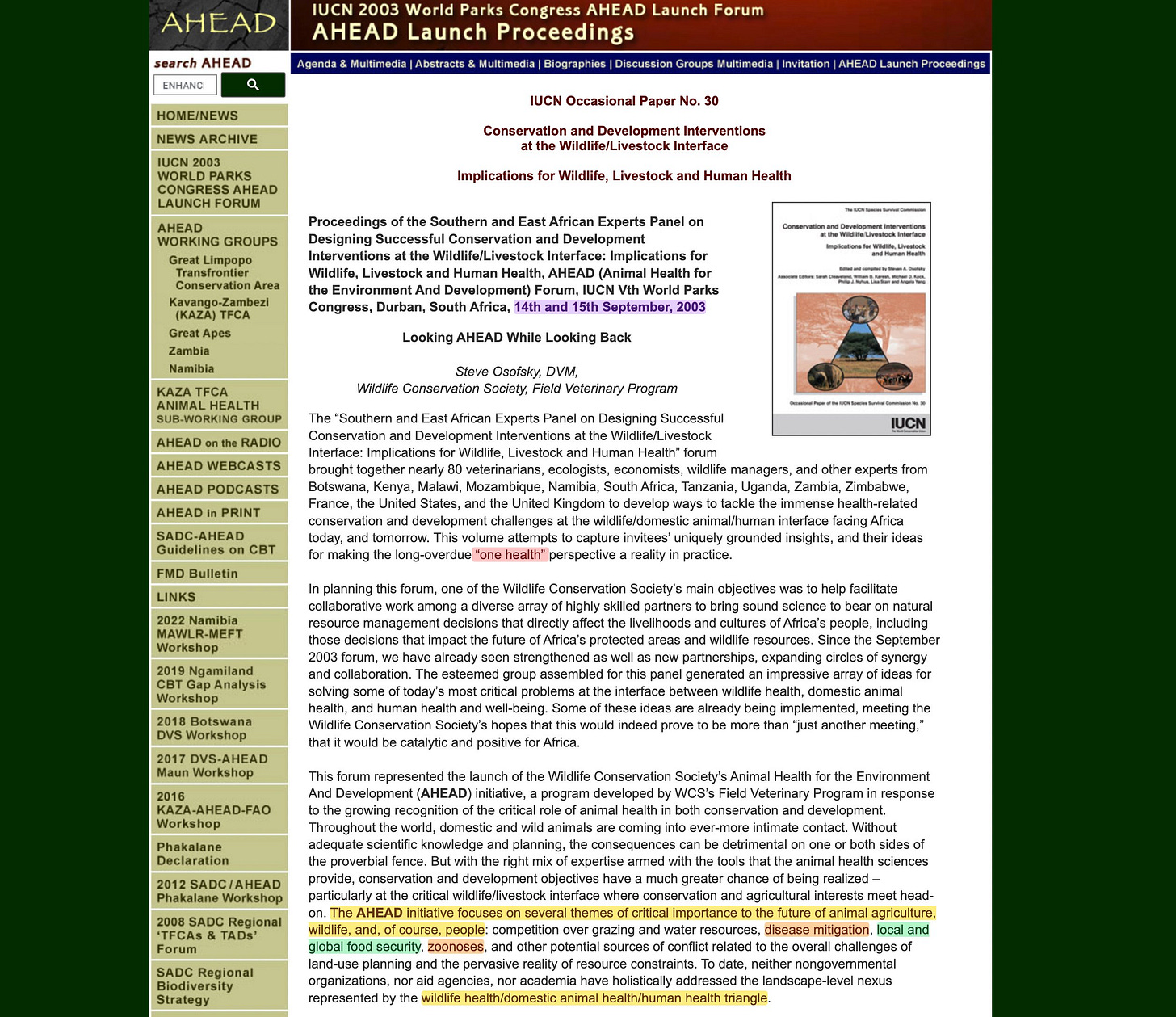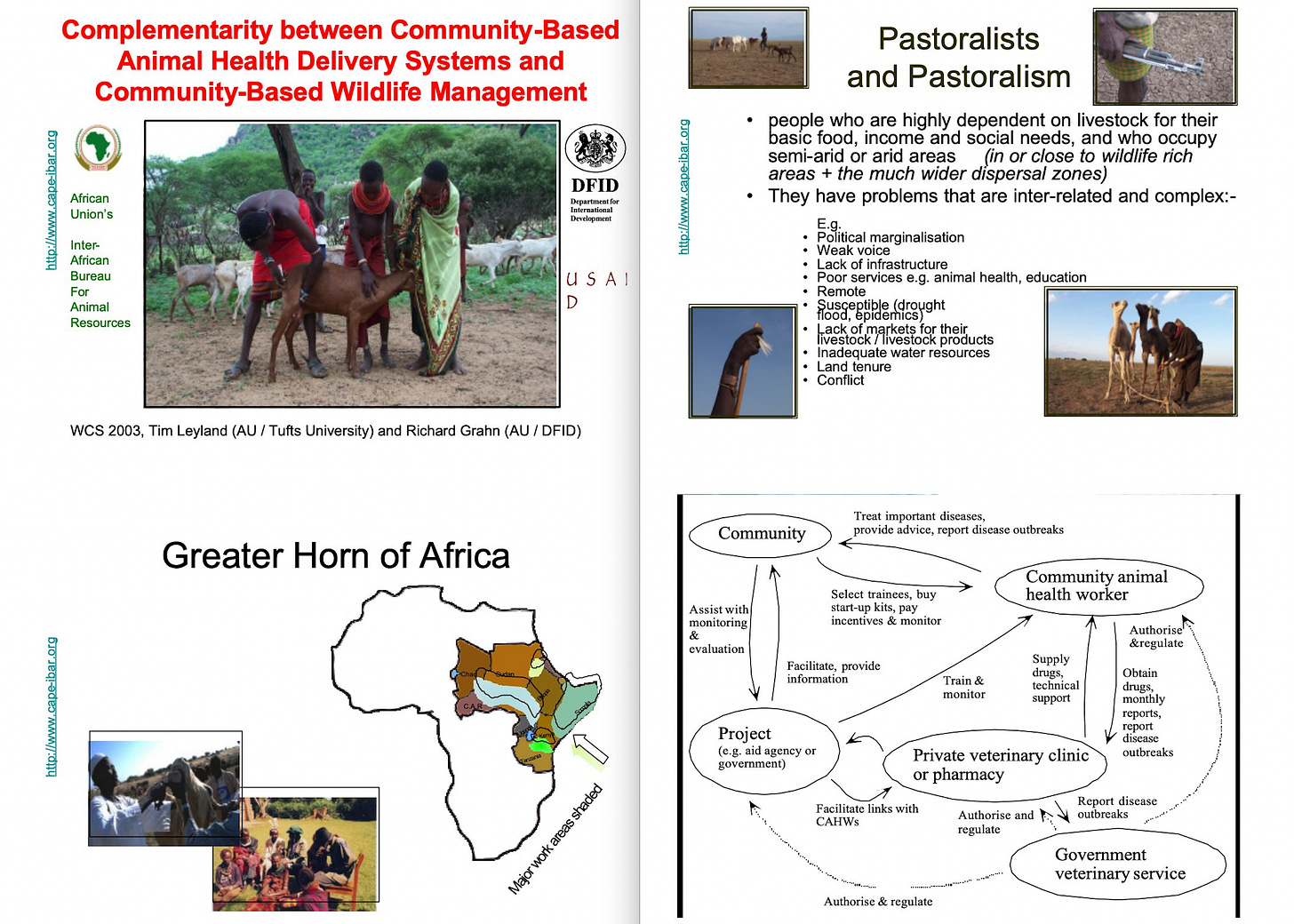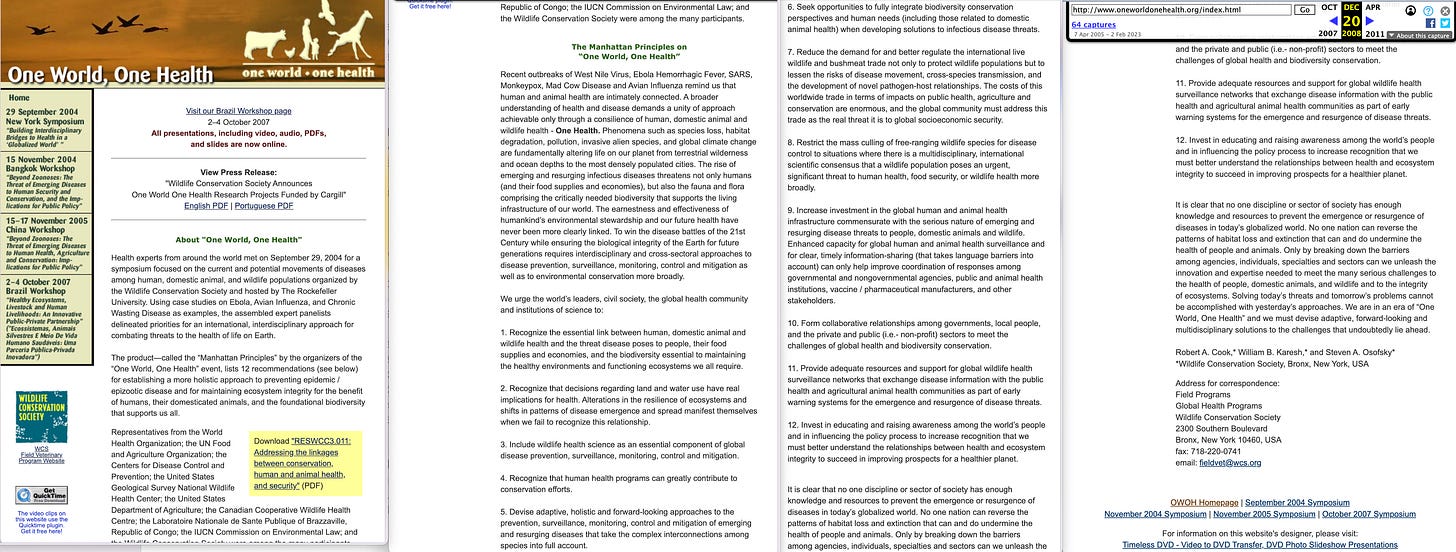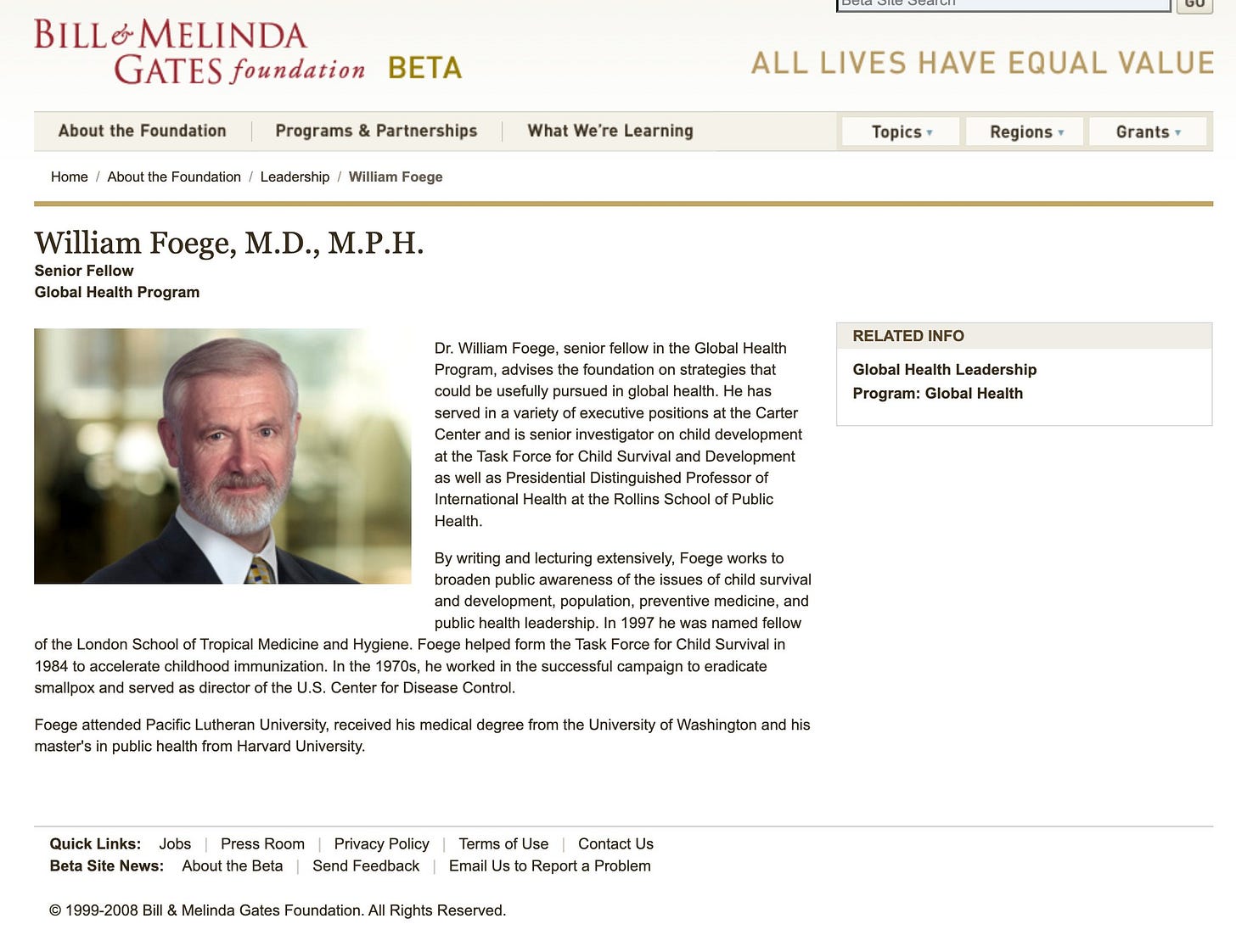One Health: What it's about
One Health was coined in September, 2003 at the Wildlife Conservation Society’s catchy event, ‘Southern and East African Experts Panel on Designing Successful Conservation and Development Interventions at the Wildlife/Livestock Interface: Implications for Wildlife, Livestock and Human Health‘ held in Durban, South Africa.
Steve Osofsky penned this summary of the forum.
It wasn’t the first indication of what it comprised. In 2002, the book ‘CONSERVATION MEDICINE ECOLOGICAL HEALTH IN PRACTICE‘ was released. It was authored by a range of luminaries, including Peter Daszak, William B Karesh, and Alonso Guirre - all of whom worked for the ‘Wildlife Trust’ which in 2010 became the ‘EcoHealth Alliance’.
One Health wasn’t specifically mentioned, but the below illustration was included in chapter 2; ‘Defining Conservation Medicine’ by Gary M Tabor. An illustration which later became the basis for One Health’s logo.
-
But when I said the term was coined in September, 2003, that’s only half true. The term itself had been around for a while, but not really gaining any substantial traction. And the specific mention in the September proceedings was actually predated by the invitation, which was sent out on March 6, 2003. You can find it here, page 169.
As mentioned, the conference was held in September, 2003, however the report was not released until 2005 by the International Union for Conservation of Nature. And who founded the IUCN, you may wonder, well, that’s where this becomes even more interesting. It was founded by Aldous Huxley’s brother, Julian, who was an eugenicist and also the first director of UNESCO.
But back to the paper. Because in spite of not having been mentioned nor participated in the 2003 forum, in the 2005 paper the Wellcome Trust is listed as a partner, along with USAID and Pfizer!
This appears a tad surprising, as most of the other early participants appear the typical concerned conservationists - like Tim Leyland and Richard Grahn, who wrote very early reports on the initiative that was to become One Health. Like this 2003 report from the Horn of Africa. Why would Pfizer jump on board?
Sure, Pfizer did have a vetenarian division in 2005, in fact, one headed by Albert Bourla - but why the sudden interest in a 2005 sponsorship for a forum held two years prior?
That’ll the topic of a different substack article. Suffice to say that the answer clarifies that it’s likely that no less than two different ulterior motives were at play at this stage.
-
The event generally given credit for being the official birthing moment of ‘One World, One Health’ took place at the Rockefeller Center in September 2004. It was at this event, the Manhattan Principles were outlined.
The primary presentation was presented by William H Foege, who just by a stunning coincidence happens to be a Gates Foundation Senior Fellow.
-
As for One Health - in general, the idea here is to merge the health of humans, animals, livestock, and the environment into one. One Health. But if we are to establish intent, let’s start off by establishing the intent of what.
If we go through all the factors outlined in the 12 principles, we have - broadly - four categories. Who for the sake of why does what to help whom?
Who can be summed up as the stakeholders, why is because of disease control, whom is the planet (with life).
The stakeholders for the sake of disease control does (what) to help the planet. We’re left with what.
What can again be broadly be subdivided into two groups - inputs and outputs - what goes into the consideration, and which actions are taken?
Broadly, inputs are resources (ie, money via taxes), and surveillance (includes monitoring and information sharing). The output is control (legislation, education and vaccines). Mitigation comprise both - using inputs to guide outputs.
In other words - Stakeholders for the sake of disease control does spend money, surveil and control to help the planet.
We know what resources - money - is and how it’s raised - but I think it’s pretty important we understand what’s meant by ‘surveillance’, and ‘control’ - no?
Control comprise four factors - control, education, legislation and vaccines. The final three are given, but we need to establish the former.
Surveillance comprise three - surveillance, monitoring, and information sharing. None of these are immediately clear.
-
With this in mind, it’s time to track down what these mean, exactly.
And that means determine the evolution of these concepts, and look for inflection points.


















